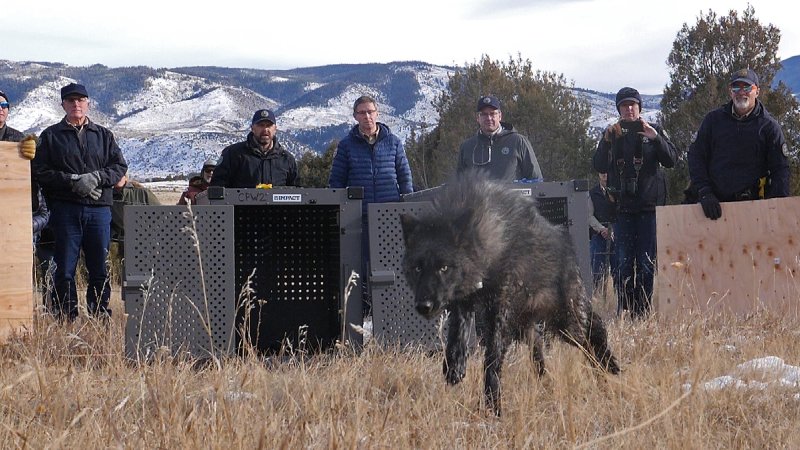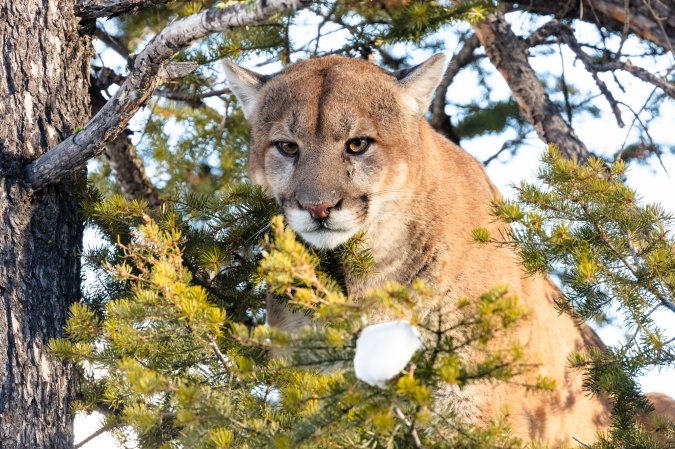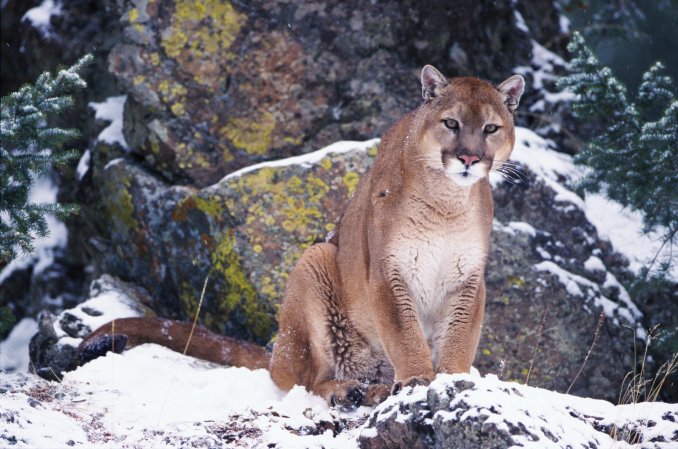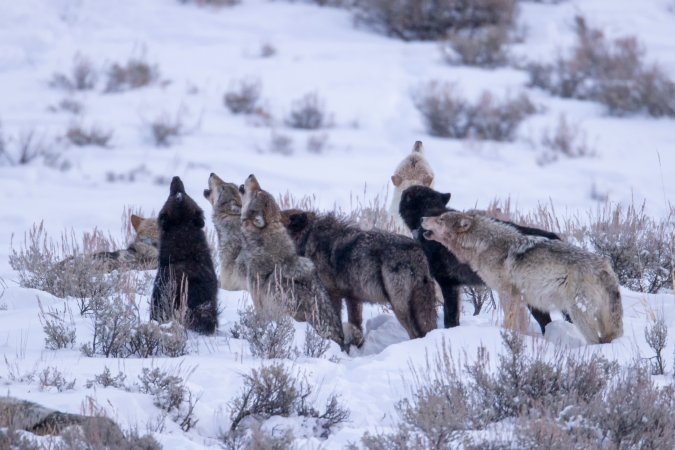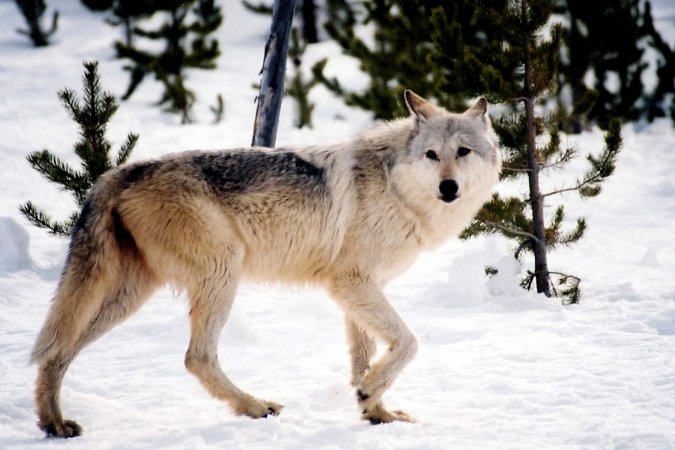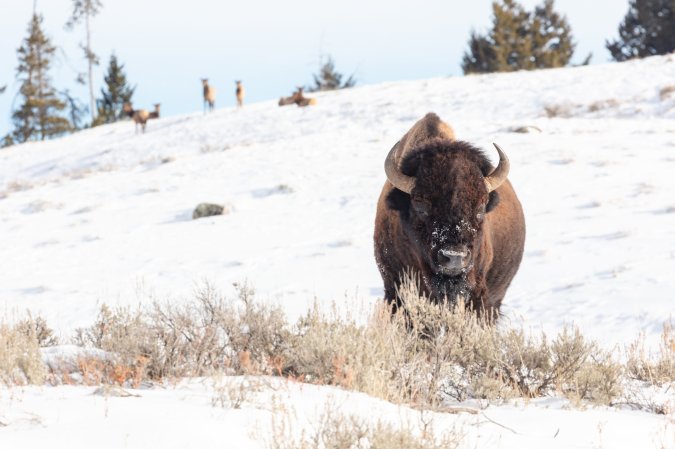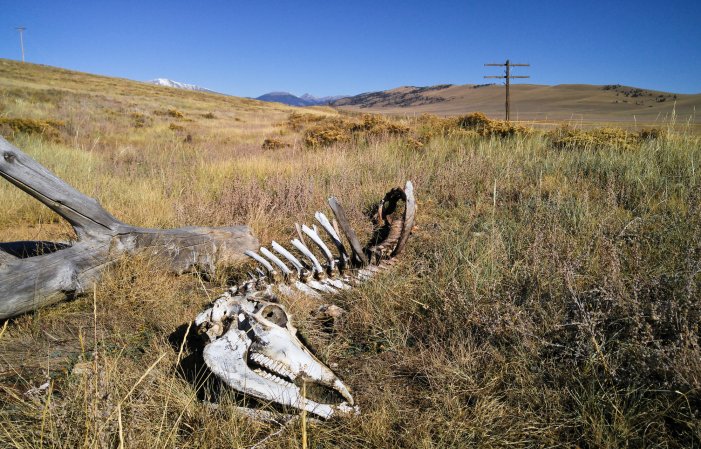Colorado Parks and Wildlife must go back to the drawing board to find a new source of gray wolves for the second phase of the state’s voter-led reintroduction efforts. The move comes after their original source, the Confederated Tribes of the Colville Reservation in Washington State, rescinded its offer to provide Colorado with wolves.
On June 6, the Colville tribal council voted unanimously, 10-0, to withdraw from its agreement with the State of Colorado, according to meeting documents. They made the decision after the Colville Business Council received word that CPW hadn’t properly involved the Southern Ute Tribe, whose sovereign lands are in southern Colorado, in stakeholder discussions about the wolf reintroduction. Now, in a show of solidarity, the Colville tribes will no longer allow CPW to extract 10 to 15 wolves from its tribal lands.
“Based on new information regarding the proposed reintroduction project in Colorado, and that we have now learned that the State of Colorado has failed to consult with the Southern Ute Tribe, the Confederated Tribes of the Colville Reservation cannot agree to the request made by the State of Colorado to provide wolves for this project at this time,” the meeting document reads.
Neither of the tribes immediately responded to Outdoor Life’s request for comment.
Read Next: As Wolf Management Debate Reaches a Fever Pitch, the Interior Department Hires a National Mediator
“It has come to our attention that necessary and meaningful consultation was not completed with the potentially impacted tribes,” Colville Business Council chairman Jarred-Michael Erickson wrote in a letter to CPW director Jeff Davis. “Out of respect for the sovereignty, cultures, and memberships of Indian Tribes in Colorado and neighboring states, who may be impacted by this project, the Colville Tribes cannot assist with this project at this time.”
CPW enacted the first phase of the reintroduction in December 2023 by releasing 10 wolves in Grand and Summit counties. The next round of releases are slated to occur between December 2024 and March 2025, CPW representative Joey Livingston tells Outdoor Life.
“Naturally, the decision made by the Colville Business Council and the Tribal Government and Natural Resources Committees is disappointing,” Livingston writes in an emailed statement. “But we have a strong relationship with the Confederated Tribes of the Colville Reservation and hope to continue these conversations in the future.”
Under the current plan, CPW has been directed to release between 30 and 50 wolves over a span of three to five years. Wildlife agencies in Wyoming, Idaho, and Montana all turned down CPW’s initial requests to support the wolf reintroduction. The first group of wolves came from the Wallowa Mountains in northeastern Oregon after the Oregon Department of Fish and Wildlife agreed to be part of the project.
As the law enacting the reintroduction was written, a 60-mile buffer must exist between wolf restoration areas and borders with non-Colorado lands, including tribal lands.
“State statute requires that wolves be released only west of the Continental Divide,” CPW clarifies on its website. “Releases in Colorado will occur a minimum of 60 miles from the northern border with Wyoming, the western border with Utah, the southern border of New Mexico, as well as a similar buffer, as requested by the Tribes, of sovereign tribal lands in southwestern Colorado. This 60-mile buffer from neighboring states will make it more likely the released animals will remain in Colorado.”
The effort to bring wolves back to the Centennial State has been mired in controversy from the start. Unlike the wolf reintroductions that have taken place in Wyoming and other northern Rockies states, Colorado’s was enacted entirely though the ballot box, and Proposition 114 passed by a narrow margin.
Tempers continue to flare, especially among rural resident and livestock producers, as the first phase of the reintroduction has resulted in 23 confirmed livestock depredations across three counties, according to the latest update from CPW. Meanwhile, the agency confirmed the first successful gray wolf reproduction in June, which establishes the state’s first named pack, the Copper Creek Pack. One of the reintroduced wolves has also died, likely the result of a mountain lion conflict.
Read Next: Colorado Green-Lights Lethal Management of Gray Wolves, Under Certain Conditions
CPW wildlife managers expected some challenges as a natural part of the process after the controversial passage of Proposition 114 in 2020. But whether they foresaw the difficulty of securing willing partners to provide the state with wolves is harder to tell.
“We continue speaking with other potential sources of wolves and will take great care in implementing the plan to create a self-sustaining wolf population while minimizing impacts on our landowners, rural communities, agricultural industries, and partners,” Livingston says. “We have not previously commented on potential source negotiations, and will not do so now.”
Despite 2024 being almost two-thirds over, CPW hopes to move forward with the project as planned.
“We are not contemplating halting our implementation of the plan,” Livingston says. “[CPW] will continue in our efforts to restore a sustainable population of wolves to the state while avoiding and minimizing impacts to our critically important agricultural industries and rural communities.”






